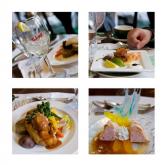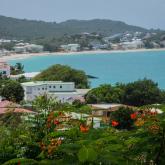While each region has its own Christmas traditions, many date back to the Colonial era. So expect rich foods, yuletide masks and elaborate costumes - and a great-sounding rendition of Rudolph the Red-nosed Reindeer on steel pans.
Yuletide traditions vary throughout the Caribbean, with many of the Lesser Antilles celebrating different Christmas customs to the Greater Antilles and its neighbouring isles. Sure, they all tend to have the same catchy Calypso versions of festive songs that you’ll find throughout the region and like elsewhere in the Caribbean, the people on each island also go into cleaning mode in readiness for the hospitality and togetherness of Christmastime. With some European influences, certain similarities exist in regards to the festivities, yet the Caribbean boasts a very distinct feel and flavour.
In Grenada, one of the most beloved Christmas traditions is the Christmas masquerades: the famous costumed parades, colourful dances and celebratory street parties that typify the festive season. In readiness for the season, the masquerade bands save a special repertoire of interactive music and dance to perform. Each is named after the traditional masks they wear, including the Wild Cow (with prominent horns), the Horse Head (an equine mask), the Policeman, the Devil, and other weird and wonderful characters.
During colour-rich, musical processions, the wearers of the masks prance around like crazy people, scaring children, and whooping and hollering to rouse the crowds that line the streets. After dancing to the cheers, theleader of the pack will hold his hat out for money (or a tot of rum). This sparks up a collective chant from onlookers: “Christmas come but once a year, and every man must have his share. Only poor Willy in the jail, drinking sour ginger beer!”
On Carriacou, in addition to the masquerades, the locals have another proud musical tradition at Christmas, known as Parang. This beguiling ritual is a style of Christmas carols sung in groups and the annual Parang Festival has been a huge event in the run-up to Christmas since 1977.
In Trinidad and Tobago, the islanders have their own parang culture, singing a less uptempo repertoire of Christmas songs that all have Spanish lyrics and without the Carriacou’s drums, string instruments, maracas, tambourine and saxophone. However at all the islands, the parang are enjoyed by children who clap along with the music, dreaming of the sweets and toys they will receive on Christmas Day.
In Barbados,their are some special Christmas foods that are enjoyed by the islanders, and while they may look similar to many of those enjoyed on other Caribbean islands, the recipes are flavoured with a distinctly different spice mix. Slices of dark black cake served on Christmas Day are made from dried fruit soaked in generous quantities of local rum and heavily spiced with nutmeg with every member of each family taking a turn to stir the mix.
When a festive meal is served in anAntiguan home, the aromas of garlic, roast pork, pepper and the spices mingle gloriously with the smells of polished wood, varnish, fresh paint and scrubbed floor tiles – the unmistakable scent of Christmas in a house proud island expecting plenty of visiting neighbours, family and friends.
In the Cayman Islands you’ll hear plenty of renditions of Jingle Bells with a reggae beat during the annual tree lighting festival when a 40ft tree becomes a dazzling spectacle at the end of The Paseo on The Crescent by the bay. Local choirs, bands, foods and crafts make this a truly cherished time of the year.
In Trinidad and Tobago, a highly spiced ginger beer and port are served freely throughout Christmas Day as a reward for abstinence on Christmas Eve, when the menfolk traditionally embark on a gruelling trek into the forest to find the perfect Christmas tree. When they find a suitable specimen, they chop it down with an axe and haul it all the way home for a hero’s welcome. Christmas mealsare typically apples and grapes, sorrel, ponche-de-creme (a version of egg nog), ham, turkey, homemade bread, pastelles (a version of Spanish tamales) and a local-recipefruitcake.
Families in St Lucia gather for a dinner-time feast on Christmas Day, joining friends and family around a large communal table.Making the meal is an all-hands-on-deck affair with multiple island dishes and seasonal foods that range from roast lamb and turkey, locally harvested yams and plantains to and plates of oven-baked sweet potatoes.




